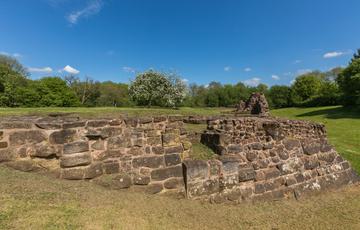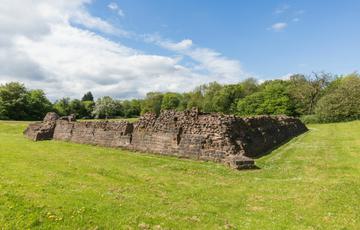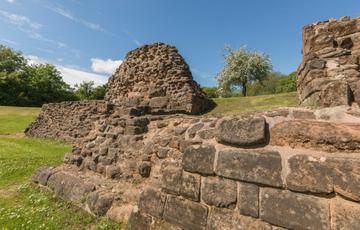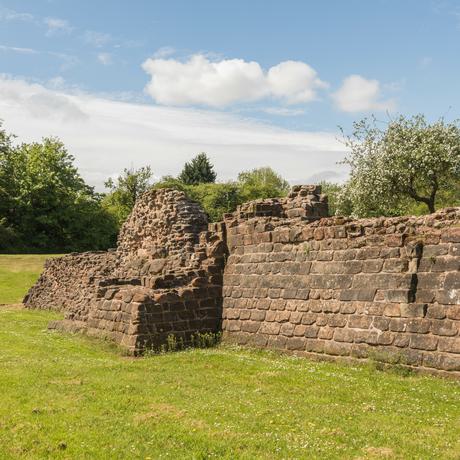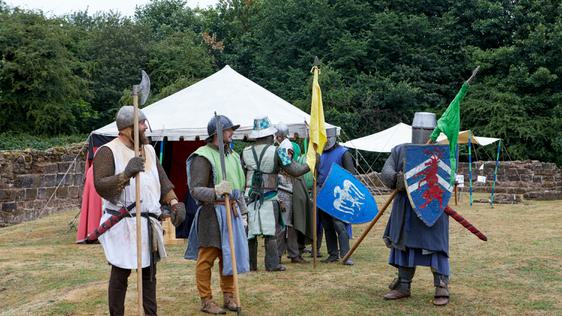The Ruins
Weoley CastleThe ruins at Weoley Castle are all that remains of a moated medieval manor house that once stood here.
What you see today dates mostly from the 1270’s, when the Lords of Dudley were given permission by the King to build and fortify their castle in stone. It was called a castle because it had a moat, curtain wall, towers, battlements and arrow slits. However, it did not have a keep or the defensive position required by a castle as it is located in a valley.
During the Middle Ages the castle was at the heart of a large deer park covering nearly 1000 acres. There were fields, smallholdings and a mill close by.
People living around here would have paid the Lords of Dudley a tithe, or percentage, of their crops as rent for their land. There was also a regular court held in the great hall where the lord presided over local disputes between neighbours, and punished those found poaching on his land. It was for this reason that the castle complex needed such a large range of buildings.
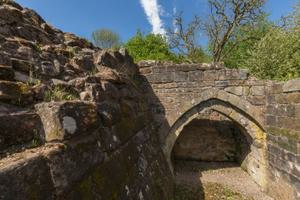
By the mid-17th century Weoley was referred to as a ‘ruyned castell’ and in the following centuries a farmhouse was built where the education room is now. The brick wall along the right hand arm of the moat and a few apple trees are all that now remain of the farm. In the late 18th century the Dudley Number 2 Canal was dug along the northern boundary and the spoil was dumped in the moat. The Bourn Brook that once fed water into the moat flows today in a culvert under your feet. Stone from the castle was used in the construction of canal bridges.
A series of archaeological digs in the 1930s and 1950s uncovered a rich collection of finds. These objects illustrate the wealth and lifestyle of the people that lived and worked at Weoley Castle. A very fine communion cruet was found, as well as painted glass that would have made up the windows to the chapel. Medieval floor tiles were revealed depicting an archer and a green man.
The castle ruins are a Grade II listed building, and the site became a Scheduled Ancient Monument in 1934.

